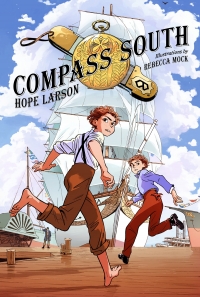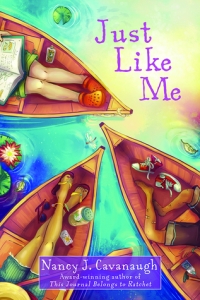Interesting Women in History
All throughout the month of March we'll be celebrating Women's History Month by profiling some of the greatest Women ever! We hope you learn about some important Women that you may not have heard about before!
Ella Jenkins (1924- ):
"The First Lady of Children's Music" began singing professionally in 1956. In addition to composing original music for children, Ella Jenkins has collected and saved call-and-response songs and stories. Her "Adventures in Rhythm" workshops taught a generation of young children about dance and rhythm. When Ella Jenkins earned a Lifetime Achievement Grammy Award, her protégé Cathy Fink wrote, "The First Lady of Children's Music has made the world a better place by helping teachers and parents bring international folk songs and original compositions into their classrooms, homes and hearts, and giving young children their very first exposure to the joy of music."
Fannie Lou Hamer (1917-1977):
"I am sick and tired of being sick and tired" were some of the famous words spoken by Civil Rights activist Fannie Lou Hamer. Ms. Hamer was born into a poor Mississippi sharecropper's family. In her quest to help register African-American voters in the 1960's, Ms. Hamer was arrested, beaten, and lost her job and her home. But she never took her eyes off the prize of equal rights for all people. In 1964, Fannie Lou Hamer got the attention of the world when she demanded that the Democratic National Convention (meeting in Atlantic City to nominate Lyndon B. Johnson for President) recognize her Mississippi Freedom Party delegation to the convention. This forced a change in the way women and minorities were represented in state politics.
Margaret Chase Smith (1897-1995):
Republican Congresswoman and Senator (1949-1973) from Maine. When she ran for the Republican nomination for President in 1964, Mrs. Smith became the first woman to have her name placed in nomination by either major political party. In 1950, she became the first member of Congress to stand up to the bullying tactics of Senator Joseph McCarthy. Her "Declaration of Conscience" called for the end of McCarthy's using the Senate as a "forum of hate and character assassination sheltered by the shield of congressional immunity." She was a conservative Senator whose support of women in the military earned her the nickname "Mother of the WAVES."
Shirley Chisholm (1924-2005):
Democratic Congresswoman from New York (1969-1983). Educated by the English school system in Barbados, which she said gave her a strong academic background. She was the first African-American woman elected to the U.S. Congress, and was a candidate for the presidential nomination in 1972. She was a co-founder of the National Organization for Women. Speaking about the role of women in society, she said, "We must refuse to accept the old, the traditional roles and stereotypes."
Abigail Adams (1744-1818):
Abigail Adams was the second U.S. First Lady (1797-1801), and the first First Lady to occupy the White House. She was the first woman to be the wife of one President (John Adams) and the mother of another President (John Quincy Adams). Although girls were not formally educated in her childhood, her natural curiosity drove her to read everything she could. Left alone while her husband helped lead the fight for independence, she ran the family farm and raised four children alone. Her letters to her husband give history a view into the world of women during the American Revolution.
Maria Mitchell (1818-1889):
American Astronomer who discovered her first comet in 1847 through a telescope her father placed on the roof of the family home. News of "Miss Mitchell's Comet" brought tourists from everywhere to see America's first woman astronomer. First woman member of the American Academy of Arts and Sciences (1848). She became a professor of astronomy and director of the college observatory at Vassar College. She often invited her students to come up to the observatory at night and watch meteor showers or other astronomical events.
Margaret Bourke White (1904-1971):
First female photojournalist, or someone who tells a story in photographs. As a child she pretended to take pictures with an old empty cigar box as her father pursued his hobby of photography. Later, she learned photography by helping her father set up shots and develop prints. As an adult, her work took her around the globe. She worked for "Fortune" and "Life" Magazines, and took photos of World War II in Europe. She even flew along on American bombing raids, taking pictures of the destruction. Her most famous subjects include South African miners and Mohandas Gandhi. Her photo of the Fort Peck Dam was used on the first cover of Life Magazine.
Jill Kinmont Boothe (1936-2012):
Championship downhill skier whose life changed forever when an accident during an Olympic ski trial left her paralyzed. She continued her education against great odds at a time when most colleges were not wheelchair-accessible. Although she was refused a state teaching certificate because of her disability, she started a summer school on the Paiute Indian Reservation near her home in California. While in physical therapy, she learned to paint, and produces a few watercolors each year. Each of her paintbrushes is fitted with a magnet that attaches to a magnet strapped to her painting hand. Her autobiography is The Other Side of the Mountain.
Dolores Huerta (1930- ):
Co-founded (with Cesar Chavez) United Farm Workers Union in 1962. As a teacher in a farm workers' community in California, she wanted to change the lives of her students' families. She left her job because in her words, "I couldn't stand seeing kids come to class hungry and needing shoes. I thought I could do more by organizing farm workers than by trying to teach their hungry children." She used nonviolence to organize farm workers into the Union. She helped create the first health benefits plans for farm workers. She spoke out against pesticides and chemicals used in farming. She is the mother of 11 children and grandmother of 14. She learned to be active and outspoken from her mother, who owned a hotel.
Queen Liliuokalani (1838-1917):
Last Queen of the Hawaiian Islands. She reigned from 1891 to 1895. She tried to regain power for native Hawaiian people that had been given to American pineapple growers. Outsiders helped change the Hawaiian constitution to say that foreigners could vote while native Hawaiians could not. American colonists and businessmen supported annexation of Hawaii by the United States. As a result, there was a revolution and Queen Lili'uokalani was arrested and kept in Iolani Palace in Honolulu. She appealed to Pres. Cleveland for help, but pineapple company owner Sanford Dole created a new government in Hawaii.
Grace Hopper (1906-1992):
Admiral Grace Murray Hopper was a pioneer in computer science. She was a mathematics teacher in 1943 when she joined the WAVES (women's branch of the Navy). Her first assignment was to "compute the coefficients of the arc tangent series." After the War, she worked with computers in education, business, and the military. She was one of the first software engineers in the world of computing. She invented the compiler, which translates English language instructions into the language of the target computer. Throughout her long life, she was most proud of her service to her country in the military. In 1985 she became an Admiral in the Navy.
Mary Pickford (1893-1979):
Movie actress and businesswoman. She was the first superstar of the movies, most famous for her work in silent movies. Nicknamed "America's Sweetheart," Mary Pickford was also one of the founders of Hollywood. An important producer, writer and director, she controlled her career and her films as few actresses or actors have since. One of the founders of the United Artists Company, with the idea that movie artists should have control over their own work and make their own movies.
Irna Phillips (1901-1973):
"The Mother of the Soap Opera." She was a radio script writer and producer. Her program, "Painted Dreams" (1930) was the first daytime dramatic series aimed at women. Since the show was sponsored by a soap company, it came to be known as a "soap opera." She created story forms and dramatic practices that are still used in today's daytime dramas. She created some of radio and (later) television's greatest daytime dramas, including "The Guiding Light," "Another World," and "Days of Our Lives."
Julia Morgan (1872-1957):
One of the first women to graduate with a degree in civil engineering from the University of California at Berkeley, where she developed her interest in architecture. She waited two years to be accepted into architecture school because no women had been admitted before. Started her own architecture firm in 1904. She became famous for using shingles, California redwoods and earth tones in her work. Designed over 800 buildings in California, Hawaii, and Utah, including several YMCA buildings. Her most famous building is the Hearst Castle in San Simeon, California, created for legendary publisher William Randolph Hearst. San Simeon is still open to the public today.
Ethel Percy Andrus (1884-1967):
Social activist who helped improve the lives of older people. She said, "It is only in the giving of oneself to others that we truly live." In 1947, she helped start the National Retired Teachers' Association because of the meager pensions teachers received when they retired. Her organization offered low-cost health insurance and the first health insurance program for people over 65. She founded the American Association of Retired Persons (AARP) in 1958, with the goal of enhancing the quality of life for older persons.
Jeanette Rankin (1880-1973):
First woman elected to the U.S. Congress (Montana, 1916). She started her political career working for women's right to vote. A lifelong pacifist, she voted against American entry into World War I as a Republican Congresswoman. She said, "I knew that we were asked to vote for a commercial war, that none of the idealistic hopes would be carried out, and I was aware of the falseness of much of the propaganda." As a Senator from Montana (1940), she cast the sole vote in Congress against US entry into World War II after Pearl Harbor. She spent the rest of her life working for peace and women's rights.
Patsy Mink (1927-2002):
First Asian-American elected to Congress (Hawaii, 1965), she served 12 terms. She was so popular with voters that she won her last election two months after she died. Learned to work well with many different people as a child in Hawaii during World War II. She built coalitions within Congress that led to the first comprehensive Early Childhood Education Act. She authored the Women's Educational Equity Act, and was a leading force behind Title IX, which guarantees equal support for boys' and girls' sports programs in federally funded schools.
Juliette Low (1860-1927):
Founder of the Girl Scouts of America. Nicknamed "Daisy" as a child, she was an accomplished artist known for her sense of humor and love of pets. Lost most of her hearing due to accidents. Meeting Lord Baden-Powell (founder of the Boy Scouts) in England, she became excited about his programs and told her sister, "I've got something for the girls of Savannah, and all of America, and all the world, and we're going to start it tonight!" The Girl Scouts brought girls of all backgrounds and abilities together, helping them develop self-reliance and resourcefulness. The Girl Scouts also helped prepare young women for possible future roles as professional women-in the arts, sciences and business-and for active citizenship outside the home.
Frances Perkins (1880-1965):
First woman Cabinet member in the U.S. government (Secretary of Labor, 1933-1945). Started her career as a social worker, and became interested in workers' rights and safety after witnessing the tragic Triangle Shirtwaist Factory fire. Her time as Secretary of Labor under Franklin D. Roosevelt is marked by many recovery efforts and labor reforms. Among them was the establishment of the Civilian Conservation Corps, the enactment of the Social Security Act, the National Labor Relations, and Fair Labor Standards Acts. Helped American workers survive the Great Depression.
Wilma Rudolph (1940-1994):
The first American woman to win three Olympic gold medals for track and field (1960). She overcame childhood disability (polio) with help of her mother, who took the child 50 miles to the black medical college of Fisk University in Nashville twice a week for two years, until she was able to walk with the aid of a metal leg brace. Became an athlete at 12 when she could walk without help. Her Olympic victory parade was the first racially integrated event ever held in her hometown of Clarksville, Tennessee. Started the Wilma Rudolph Foundation to help young athletes in poor areas.










